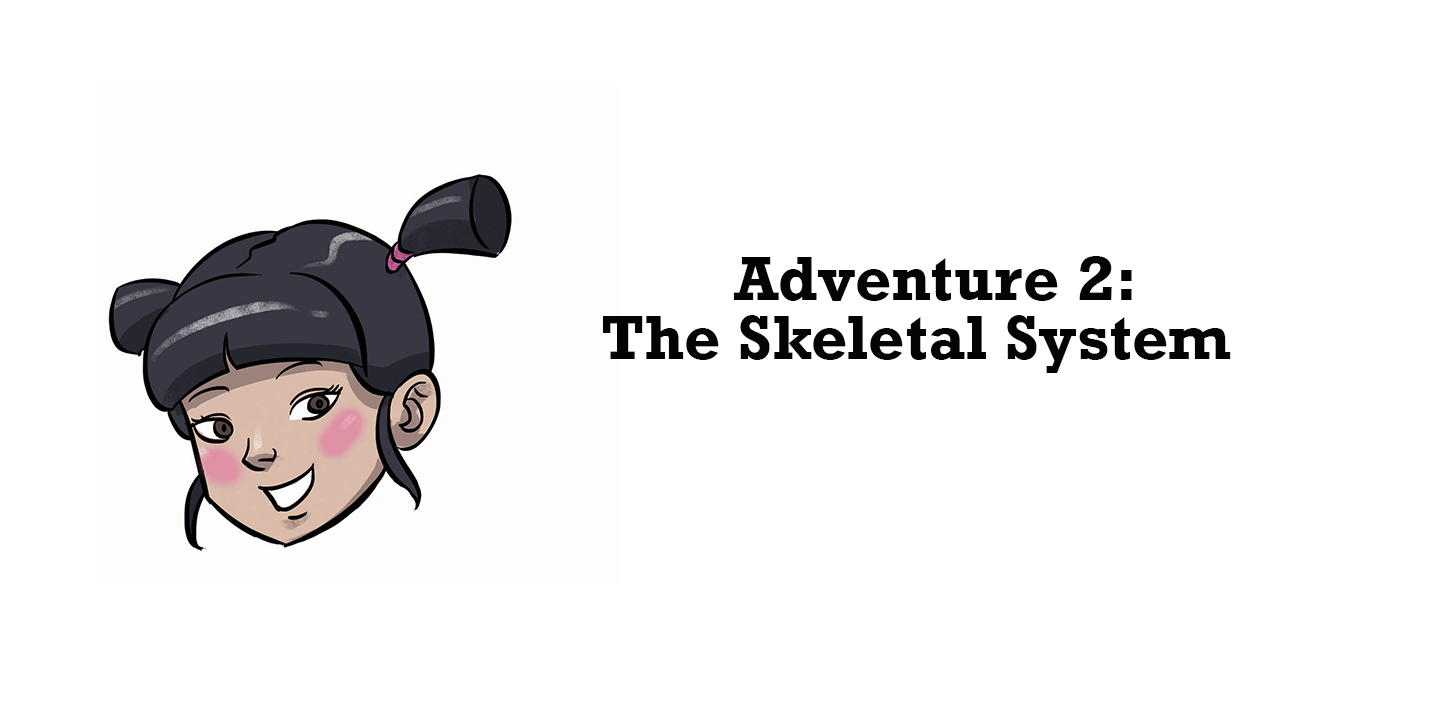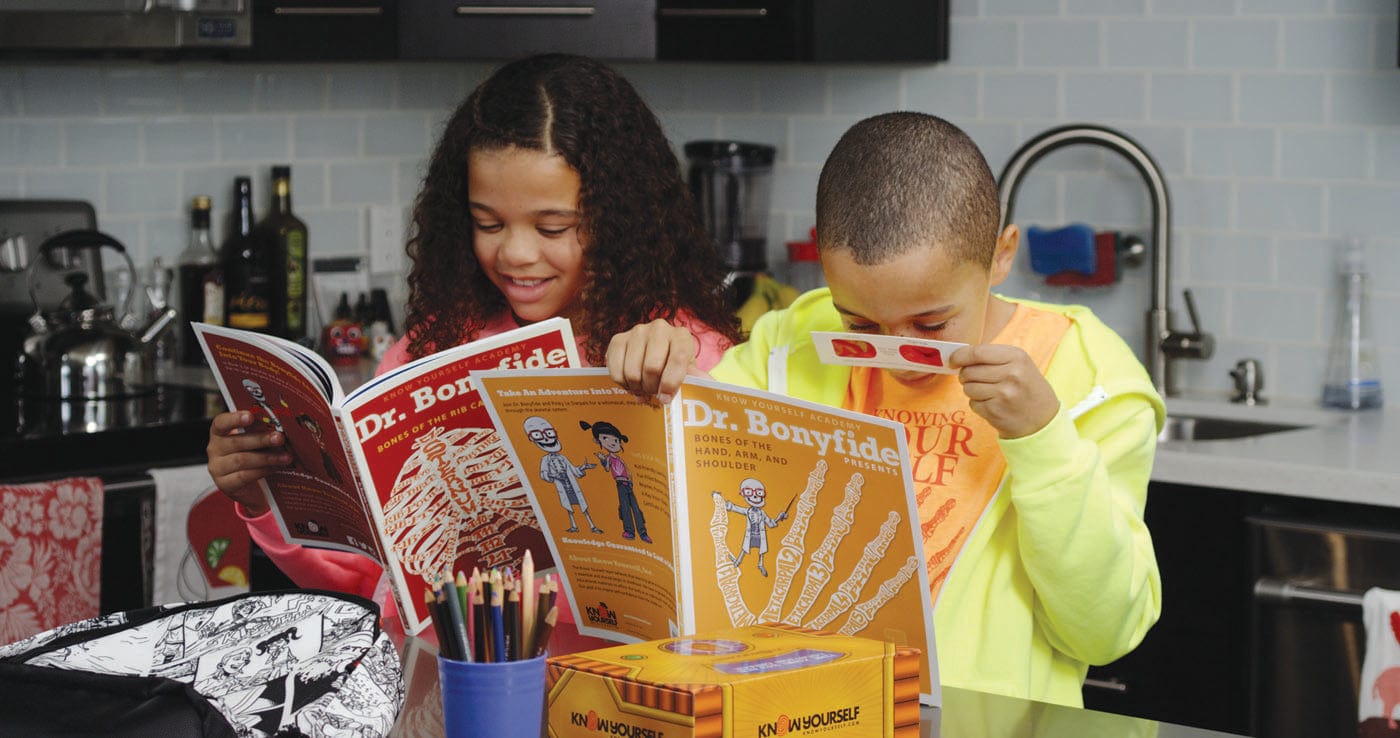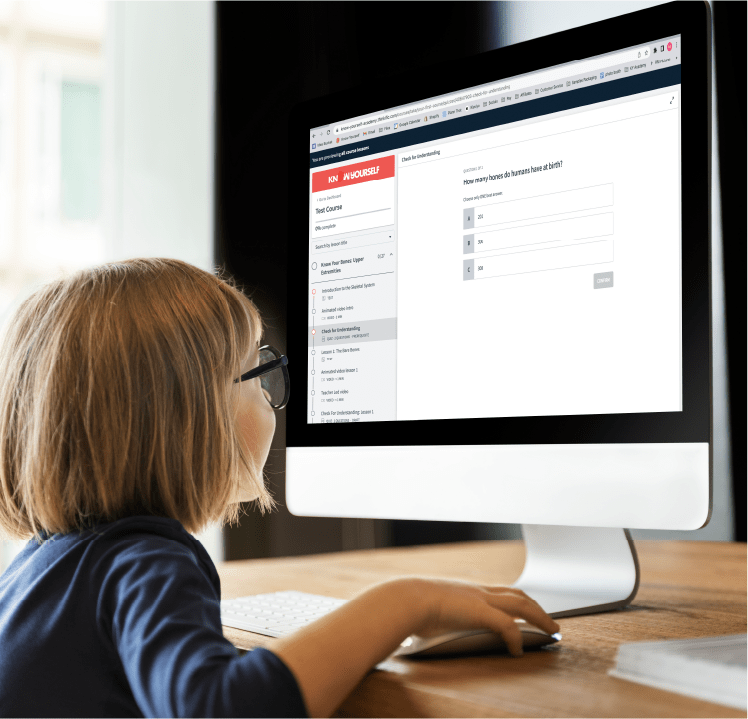
No matter who you are, where you live, or what age you are, you have something that everyone else has, too… a skeleton! The skeleton is composed of a complex system of bones to keep you upright and moving, all while protecting your internal organs. The skeleton also holds the key to many fun and surprising facts.
Here are some of our favorite fun facts about bones for kids:
How Many Bones are in the Human Body?
One of the most important human skeleton facts is how many bones we have! At birth, humans are born with about 300 bones.
As kids continue to grow, some bones in the body fuse together to form bigger bones. This process is called ossification. This ossification process isn’t complete until about your mid-twenties, when your bones will be at their largest size.
By the time you reach adulthood, you will have 206 bones in your body! However, some people have “extra” bones in various places in their body. Most of the time these bones are harmless; however, in some rare cases, they can be painful and have to be surgically removed.
Bones are ... Alive?
When we see bones in a museum or depicted online, they often look hard and dry. However, the bones in our bodies are alive and made of living tissue!
Our bones are constantly going through the process of bone remodeling, or the creation of new bone to replace old bone. This process is aided through special cells all starting with 'Osteo-,' which is Greek for bone. Osteoclasts are cells that destroy bone, while osteoblasts build new bone. A fun way to remember which is which is that osteo blasts have a blast building new bone, while osteo clasts are often clasting (clashing) and breaking things.
Are All Bones Connected?
We have all heard the famous song about the skeletal system: The foot bone's connected to the leg bone, the leg bone's connected to the knee bone, and so on. But are all bones as connected as we think?
At first glance, it would seem that all bones are connected in one way or another. However, there is one that is not: the hyoid. The hyoid is a tiny, horseshoe shaped bone in the neck that supports the tongue and the bottom of your mouth which helps us to talk, breathe and swallow.
Giraffe vs Human Neck: What’s the Difference?
Who do you think has more bones in their neck - a human or a giraffe?
Most people would guess a giraffe has more, however, humans and giraffes actually have the same number of neck bones! While a giraffe's neck can weigh as much as 550 pounds and be as tall as 20 feet, their basic structure (7 neck vertebrae) is the same as humans and even frogs!
While the number of neck vertebrae remain the same, the size is drastically different. One of a giraffe’s vertebrae can be as big as 10 inches. You can see the difference in size in a giraffe vertebrae compared to humans on the left!
Skeletons Around the World
Have you noticed that around Halloween you see lots of human skeletons around? Did you know there is a holiday around this same time called Día de los Muertos ? Meaning "Day of the Dead" in Spanish, this Mexican holiday honors family members who have passed away. On this special day, their souls are said to return to earth.
To celebrate Día de los Muertos, people decorate an 'ofrenda' or 'table' with candy sugar skulls, family pictures, the person's favorite foods, and other offerings meant just for the loved one. Often on the ofrenda you can find a calavera, or skull, painted intricately. The meaning of Dia de los Muertos is not only to remember the dead, but to overcome the fear of death and to celebrate life. Each calavera is designed and made with different meaning.
Activity:
Colorful Calaveras Have your kids design their very own calavera or sugar skull. Use Naz for inspiration above or talk with your kids about any special meaning they can add to their drawings. Download your calavera template here.
Eating for your Bones
As we learned above, a great skeleton fact for kids to remember is that our bones are constantly changing and growing due to remodeling. To build strong and healthy bones you need to feed them well. This is especially true when you add stress to your skeletal system through sports or physical activity. Some key ingredients to keeping bones happy and healthy are calcium, vitamin D, and magnesium.
Many people might think of cheese, milk, and yogurt as the main bone health source, but there are other ways to get bone support for those who are lactose-intolerant or looking for something different.
Some bone-enriching foods include:
- Hummus with vegetables
- Avocado
- Almond butter with apples or celery
- Smoothies with calcium-fortified almond milk or soy milk (try adding kale or any other dark leafy green for an extra calcium boost!)
- Tofu
- Salmon
Parent Tip:
Even though these are important for strong bones, don't stress about keeping track of vitamin intake. Most kids (and adults) get enough bone-supporting vitamins with a healthy diet.
Activity:
Strong Bones! Explore bone strength with this activity and learn skeleton facts along the way!
Learn Fun Facts About the Skeletal System with Know Yourself
To learn more about the skeletal system, join the Loops Crew as they set sail for Russian and learn about the bones in Adventure 2: The Skeletal System.
For other resources with fun facts about human bones for kids, check out our skeletal system collection.









Leave a comment (all fields required)